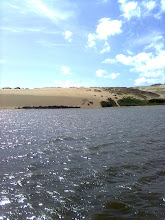
The magic numerals 3, 7, 9, 18 and 27, so frequent in the Lithuanian folklore, may be related to the archaic lunar calendar. It is quite probable that the oldest numeration in the history of mankind was trecimal. Strokes or dots which make the ornaments of the Neolithic ceramic artifacts are often grouped in triades. Number three and its multiples are found in many Lithuanian folk songs and legends. And even ritual formulas acquire their magic power only when repeated thrice. A drink boiled from a mixture of herbs gathered on an early morning of the Midsummer Day (summer solstice) from 3 fields in bunches of 9 different herbs, has particular magic properties. Historical records give evidence that the week of ancient Balts was 9 days long. Thus, the siderical month must have been divided into three parts. It is quite probable that a similar week is represented by a deer with nine horns, a popular character of the Lithuanian Advent songs. Trecimal numbers and crescent-shaped pendants have been found on a bronze necklace excavated in a 2000 years-old Baltic grave (see pic. - a bronze necklace used by a Baltic woman 2000 years ago. )
The oldest Baltic cosmological schemes, calendars, found on the burial urns dated 600-200 B.C., are in custody of the Gdansk archaeological museum in Poland. The splendid 12-month calendars engraved on pottery have been found near the borders of the Baltic area, in the present territory of the Ukraine which date back to the beginning A.D. In the 14th century the Grand Duchy of Lithuania used a solar-lunar calendar. The structure of this calendar was understood with the help of the so-called Gediminas Sceptre discovered in 1680. The sceptre indicates that the year started in April and normally had 12 months varying from 29 to 31 days. Every month started with the new moon. The months have unique Lithuanian names, expressed in symbols, which reflect natural phenomena and agricultural activities.
- to be continued -


Komentarų nėra:
Rašyti komentarą